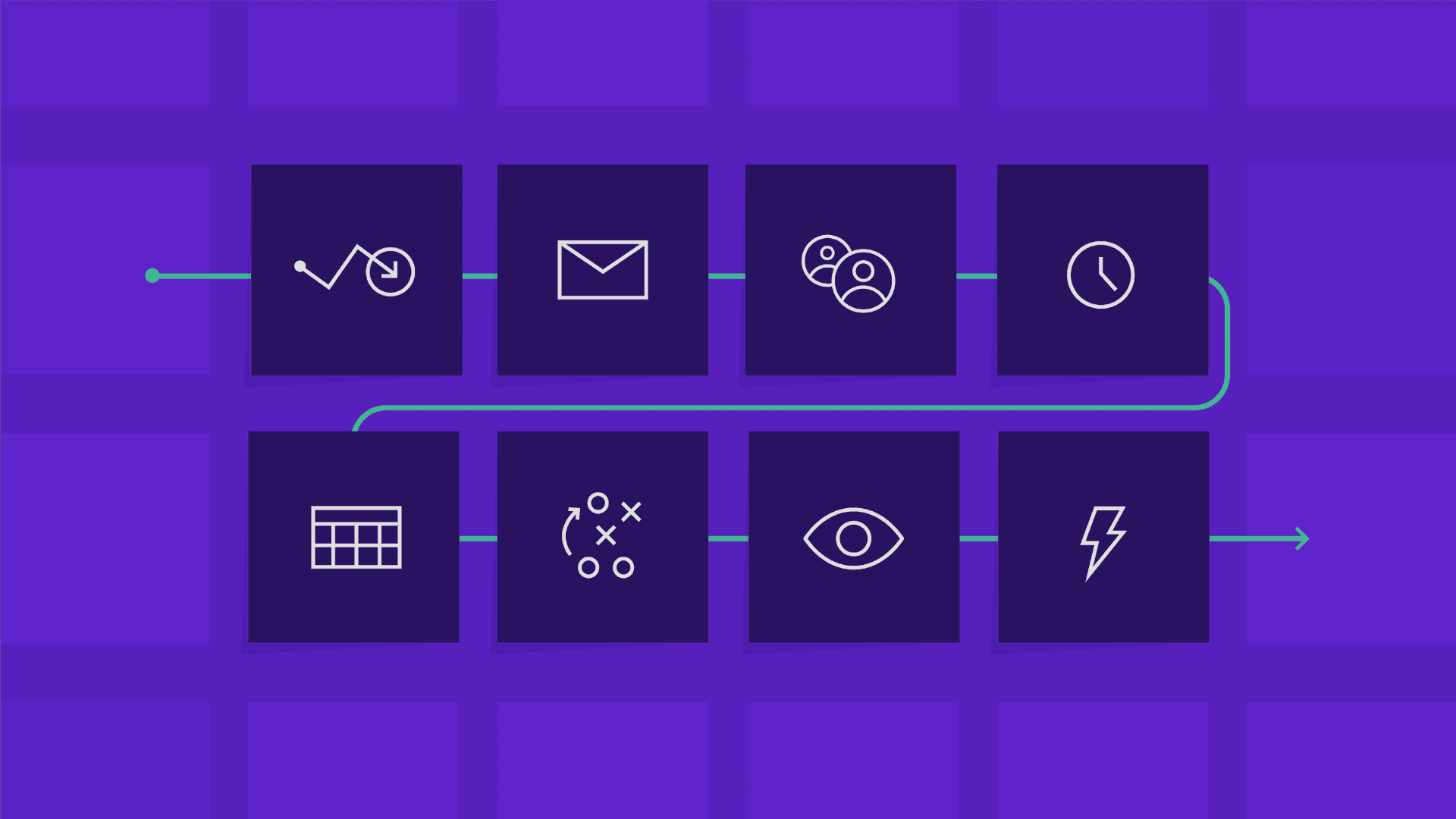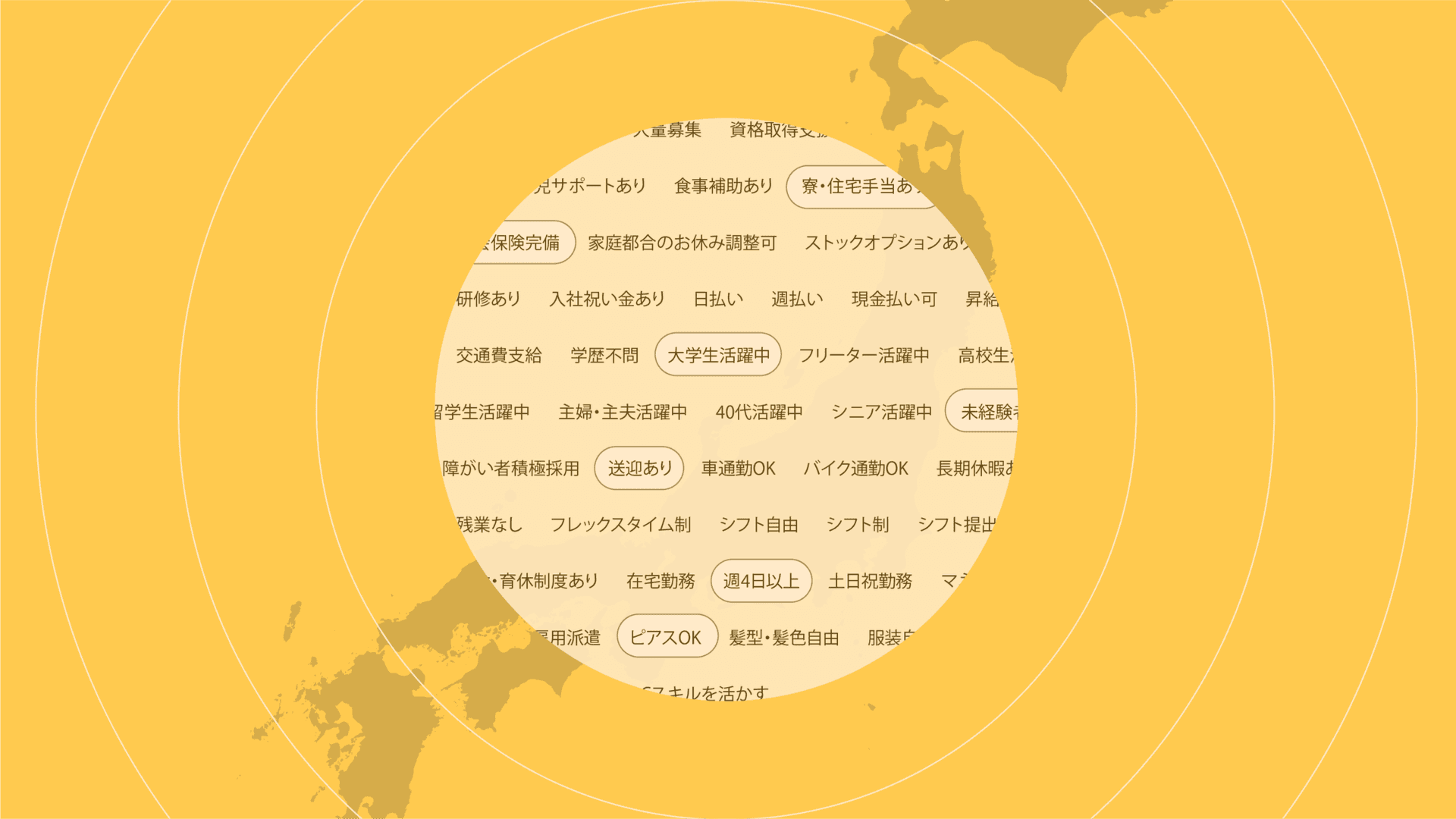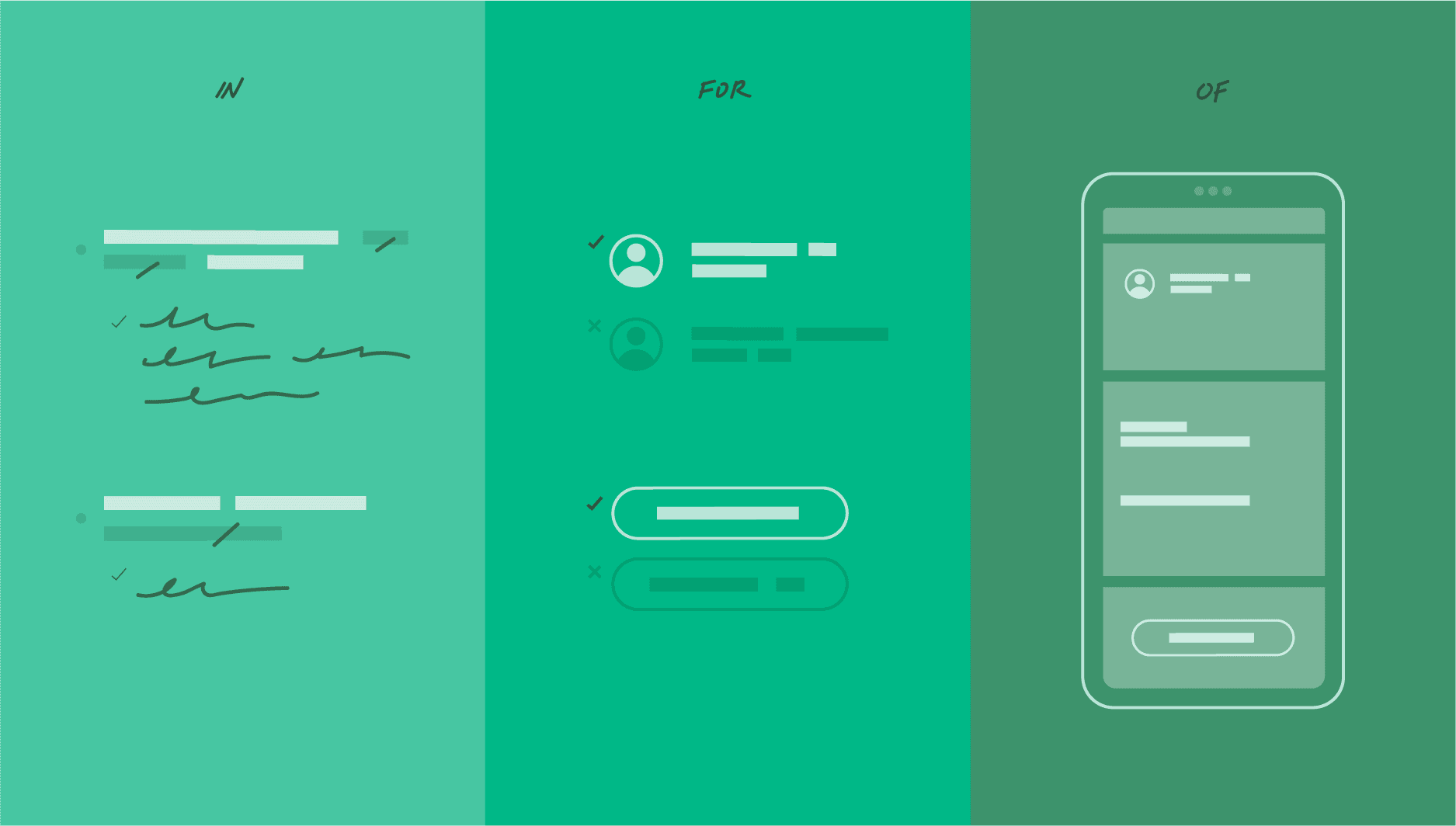A successful workshop is a thrilling experience. The moderator harnesses the collective power of everyone in the room and directs it toward a single goal. Difficult tasks become easier. Productivity accelerates. Everyone comes away focused on a shared purpose and ready to take on more.
Results like these don’t happen by chance. I’ve run many successful workshops, from two-hour sessions for small groups to multiday offsites that brought together dozens of participants representing multiple teams. After navigating innumerable team exercises, many time checks, and a blizzard of sticky notes, I’ve landed on a handful of steps that set me up for success. These are the guidelines I follow to ensure my workshops achieve their goals and move my teams’ projects forward.
1. Decide where you want to end
This first step is arguably the most important, as it’s the basis for everything else. Identify your desired outcome and you’ll invite the right people for the right amount of time. This helps you avoid unproductive brainstorming. Here are some examples of achievable workshop goals:
- Plan what to build for the next quarter, year, or five years. Your organization might call this sprint planning or roadmapping.
- Secure cross-functional or leadership buy-in for a project’s direction.
- Train on a new product or process and ease adoption.
- Learn about related work across teams to break down silos and nurture company culture.
2. Invite carefully
With specific goals in place, you can decide who needs to be involved. Think about whose work the results will influence and whose support you’ll need to put the decisions into practice. Include participants from various disciplines — design, marketing, engineering, product, support — to get different perspectives.
Invite the right number of people. If you’re running a design workshop with concrete deliverables, avoid too many participants. Too many cooks in the kitchen makes it hard to come to consensus on a specific design. If you need to get agreement among many teams and disciplines, you’ll need to invite more, and should expect more high-level results.
3. Create effective groups
Think carefully about how you partner people for the workshop exercises. Try combining people from different functions or products. You’ll get varied perspectives on the problem and encourage collaborative solutions.
Weigh seniority and decision-making power as well. For example, avoid putting all directors in one group. And don’t strand an associate designer on a team full of senior project managers and engineers. Be ready to make a swap if something isn’t working.
4. Pick the right length and location
The usual answer to, “How long should my workshop be?” is, “How much time do you have?” This approach cuts both ways. Key participants’ availability may limit how long you can meet. But don’t automatically book all the available time. Instead, base your schedule on the outcome you want.
In general, the larger your goal, the more time you need. High-level concepts may take less time to produce than high-fidelity solutions that are ready to test, for example. Bringing a team up to speed with a review of data that’s already synthesized might take an hour. Getting participants to engage with new user research before a design sprint requires more time.
For a critical workshop with high stakes it’s worth the budget and time to book a spot out of the office. There are fewer distractions and you’re on neutral territory. That helps everyone engage equally and comfortably. This break from routine helps set the tone to act — and think — in new ways.
5. Schedule, schedule, schedule
Now it’s time to plan the time inside the workshop. Break your big goal into bite-sized pieces and write down what participants should learn or do in each one. Share those expectations at the start of the day and each time you change activities. You’ll have to be flexible, of course, but plan how long each section will take, ideally down to the minute.
Bear in mind that you’ll need extra time if you change the group’s focus with a new exercise or presenter. And build in a buffer for people who don’t show up, technology that doesn’t work, or an exercise that doesn’t go as you expected. Be prepared to save time by cutting an exercise short.
6. Get the activities right
A good exercise moves the day’s purpose forward. A low-intensity ice breaker is always a good start; it helps people get comfortable so they feel safe speaking up and receiving constructive feedback. Mix up the length and types of exercises so that folks who work in different ways all get a chance to shine. Try to alternate between large group discussions, smaller subgroup tasks, partner work, and individual activities.
Watch the activities as they progress and be ready to fix what isn’t working. You might need to end a session early or change a paired exercise to a group discussion. And don’t let technology failures stop you. It’s always good to have a backup plan in case you lose Wi-Fi or VPN access. Print out key screens, prepare several ways to hang paper, and bring extra flip charts in case the expected whiteboards aren’t available.
7. Moderate — it’s essential
Moderators keep participants on track and record side topics for later exploration. They might flag holes that need discussion. Moderators help to articulate issues, putting differences in context so they don’t come across as disagreements. They stay neutral and upbeat. While they don’t take sides, moderators can play the role of helpful devil’s advocate. Above all, moderators make sure the workshop stays on schedule and achieves the stated goals.
Do you have lots to cover? Lots of people? Not much time? The more you answer, “yes,” the more moderating you need. One moderator can handle a design workshop for six to eight people. Beyond that, you’ll need more moderators and tighter orchestration. Concrete deliverables demand more moderation and smaller groups, whenever possible. A workshop of 30 participants and one moderator simply can’t generate high-fidelity prototypes or finalized business objectives.
8. Respect the participants
Planning and pastries will only get you so far. For a truly successful workshop, you need to track the mood in the room and respond to keep folks motivated and engaged. Are people sitting for a long time and getting bored or sleepy? Try silly breaks, ice breaker questions, snacks, or even music to get people up and moving.
Setting expectations and checking in with the group regularly also help keep spirits up. Start each day by going over the goals to help people stay focused. Before you switch to a new exercise, articulate what you’ve learned and summarize findings to help people switch gears. If you think you might go long, give everyone a heads-up. Maybe start earlier that day. If you still need to end late, check in with people at midday and come up with an alternative to achieving the day’s goals if folks can’t stay.
Last but not least, close with an inspiring finish. Spend a few minutes at the end of the day summarizing the group’s accomplishments and next steps. Do the same when the workshop finishes. Participants will have a clear plan for moving forward and they’ll leave feeling energized, having made good progress toward meaningful goals.
Good luck! I’d love to hear in the comments about your experiences running workshops big and small.





